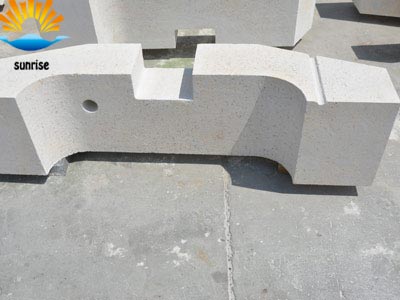Product Search
Quickly find the product you need
Products List
Refractory Knowledge
- The Use of Mullite Insulation Bricks
- Thermal Shock Resistant Fireproof Heat In
- Refractory material production process
- Pollution and treatment in the production
- Classification of mullite insulation bric
- Manufacturing process of fire clay insula
- Production Process Methods of Refractory
- the development of the refractory brick i
- Aggregates Used For the Production of Ins
- Pros and cons of lightweight mullite bric
Products List
- Phone:0086-370-63838939
- Email:sales@sunriserefr.com
- Office Address: No.36 Fengchan Road Of Zhengzhou, Henan, China (Mainland)
Effect of Forming Method on the Change of Mullite Insulation Brick Line
Date:2019-09-12 10:39 | From:Zhengzhou Sunrise Refractory | Author:admin
The lightweight mullite insulation brick is a high alumina refractory material mainly composed of mullite (3Al2O3·2SiO2). Generally, the alumina content is between 65% and 75%. In addition to mullite, the mineral composition contains a small amount of glass phase and cristobalite, and a higher amount of alumina also contains a small amount of corundum. The mullite insulation brick can be directly used for lining of high temperature kiln, and has been widely used in the lining of shuttle kiln, roller kiln, glass and petrochemical kiln.
After the mullite insulation brick sample was fired at 1550 ° C for 3 h, the sample line prepared by the foam method had the largest shrinkage rate of 2.4%; while the mullite insulation brick sample prepared by extrusion method had the smallest shrinkage rate, only 1.3%. Further, the sample was re-fired at a temperature of 1620 ° C for 12 h, and the shrinkage rate of the sample prepared by the foam method was the smallest, which was 0.73%; and the sample prepared by the extrusion molding method had the largest shrinkage rate of the re-firing line, reaching 1.56%.

The mullite insulating brick prepared by the foam method has the characteristics of large shrinkage rate after burning and small shrinkage rate of re-firing line, and the main reason is that the structure thereof is more uniform, and the pore size distribution of the pores exhibits a micro-nano coexistence of bipolar distribution and sintering. More fully caused. On the other hand, the mullite heat-insulating refractory brick prepared by the mechanical pressing method has a smaller line shrinkage ratio and a reheating line shrinkage ratio than that prepared by the extrusion method, which is mainly because the direction of the force of the molding process is different. As a result, the sample prepared by the mechanical pressing method will have a certain degree of expansion during the firing process.
If you are interested in our products or have any question, please feel free to contact us for further information. We sincerely look forward to establishing a long-term mutually beneficial relations with all friends from around the world.

